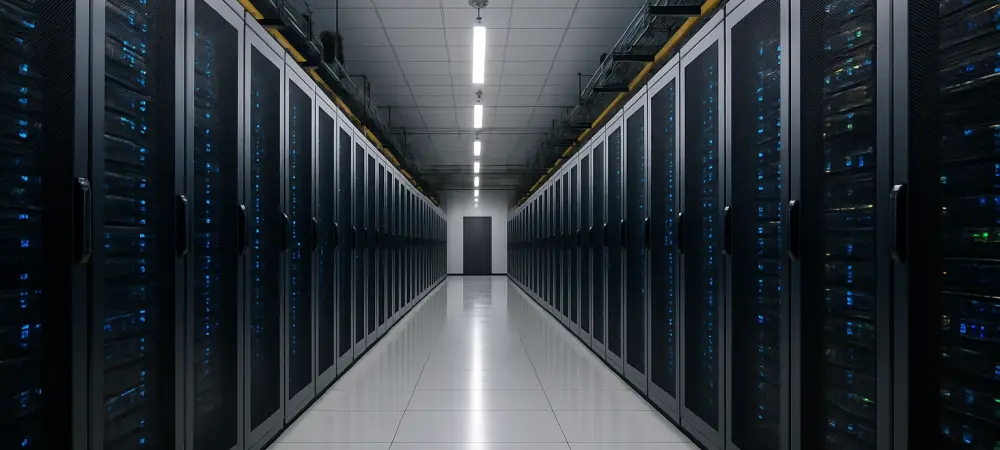Setting the Stage for a Data-Driven Revolution
In an era where artificial intelligence (AI) is reshaping industries at an unprecedented pace, the global data center market faces immense pressure to keep up with skyrocketing computational demands. A staggering projection estimates that the data center industry will grow to $438 billion by 2030, driven largely by AI and high-performance computing needs. Amid this surge, Canberra Data Centres (CDC) is positioning itself as a potential market leader with its ambitious 200MW campus in Maddington, located just 20 kilometers southeast of Perth, Western Australia. With an initial investment of AU$415 million (approximately $270.2 million), this project is poised to become the largest AI-focused data center campus in the region. This analysis explores how CDC’s latest venture could redefine market trends, focusing on sustainability, strategic importance, and multifunctional design as key differentiators in a crowded landscape.
Diving Deep into Market Trends and Projections
Sustainability as a Market Differentiator
The data center industry is under intense scrutiny for its environmental footprint, with energy and water consumption often cited as major concerns. CDC’s Maddington campus introduces a game-changing approach by adopting a closed-loop liquid cooling system that uses zero water for primary cooling. This innovation aligns with a broader market shift toward sustainable infrastructure, as regulatory bodies worldwide tighten guidelines on resource usage. Industry forecasts suggest that green technologies could become a deciding factor for clients choosing data center providers, with sustainability-focused facilities potentially commanding a premium in contracts over the next decade.
This move by CDC not only addresses environmental challenges but also positions the company as a frontrunner in a market increasingly valuing corporate responsibility. However, implementing such advanced systems comes with high initial costs and scalability challenges, particularly in regions with variable climates like Western Australia. The success of this technology at Maddington could set a benchmark, influencing competitors to adopt similar solutions and potentially reshaping pricing models across the sector.
Strategic Positioning in a Geopolitical Landscape
Another critical trend shaping the data center market is the intersection of technology and national security. The Maddington campus stands out due to its alignment with the AUKUS partnership, a trilateral security agreement between Australia, the United Kingdom, and the United States, emphasizing defense technologies such as AI and quantum computing. Western Australia’s emerging role as a hub for national and regional security enhances the campus’s appeal to government and defense-related clients, creating a niche market segment that few competitors can match.
This strategic focus offers CDC a unique edge over other regional players like Equinix or NextDC, whose facilities may lack such explicit alignment with geopolitical priorities. However, this positioning also introduces risks, including potential cybersecurity vulnerabilities and reliance on government contracts, which can be unpredictable. Market analysis indicates that data centers tied to national interests could see a 15-20% increase in demand from public sector clients by 2027, provided they maintain robust security protocols and operational flexibility.
Multifunctional Hubs: Redefining Data Center Utility
Beyond traditional storage and processing roles, the market is witnessing a pivot toward multifunctional technology campuses, and Maddington exemplifies this evolution. CDC envisions the site as a comprehensive hub with facilities tailored for high-power AI workloads, secure office spaces, and customized amenities for a diverse clientele ranging from tech giants to government agencies. This trend reflects a growing demand for integrated environments that foster collaboration and innovation, moving away from the isolated data center models of the past.
The potential of such campuses to attract a wide array of customers could redefine revenue streams for operators, with ancillary services like office leasing adding to core data hosting income. Yet, challenges persist, including the logistical complexity of managing varied operations and the risk of slower adoption in Perth’s smaller tech ecosystem compared to hubs like Sydney or Melbourne. Market projections suggest that multifunctional data centers could capture up to 30% of new builds in the Asia-Pacific region over the next five years, signaling a transformative shift if executed effectively.
Future Growth Trajectories and Industry Implications
Looking ahead, the Maddington campus highlights several emerging trajectories for the data center market. The surge in AI-specific infrastructure points to a future where specialized facilities dominate, driven by the exponential growth of machine learning applications across industries like healthcare, finance, and logistics. Additionally, sustainability will likely transition from a competitive advantage to a baseline expectation, with innovations like zero-water cooling becoming standard as energy costs fluctuate and environmental regulations tighten.
Economic factors, including rising operational expenses, and technological advancements, such as next-generation processors, will further influence market dynamics. Analysts predict that geopolitical strategies will increasingly shape data center locations and partnerships, with facilities like Maddington serving as critical nodes in national security frameworks. This convergence of technology and policy could lead to a market where strategic alignment becomes as vital as technical capacity, potentially altering investment patterns and client priorities through 2030 and beyond.
Reflecting on Insights and Charting the Path Forward
Looking back, the market analysis of CDC’s Maddington campus reveals its potential to influence key industry trends, from sustainable design to strategic national alignments and the rise of multifunctional hubs. The project underscores how innovation and foresight could position a regional player as a global contender in the data center space. It also highlights the delicate balance between opportunity and risk, particularly in navigating environmental and geopolitical challenges. For stakeholders, the next steps involve prioritizing investments in green technologies to stay competitive amid tightening regulations. Businesses are encouraged to explore partnerships with operators offering tailored, multi-use facilities to meet diverse operational needs. Policymakers need to consider supporting infrastructure that aligns with national priorities, ensuring robust cybersecurity measures to protect sensitive operations. By focusing on these actionable strategies, the industry can leverage pioneering projects like Maddington to drive sustainable growth and resilience in an ever-evolving digital landscape.

